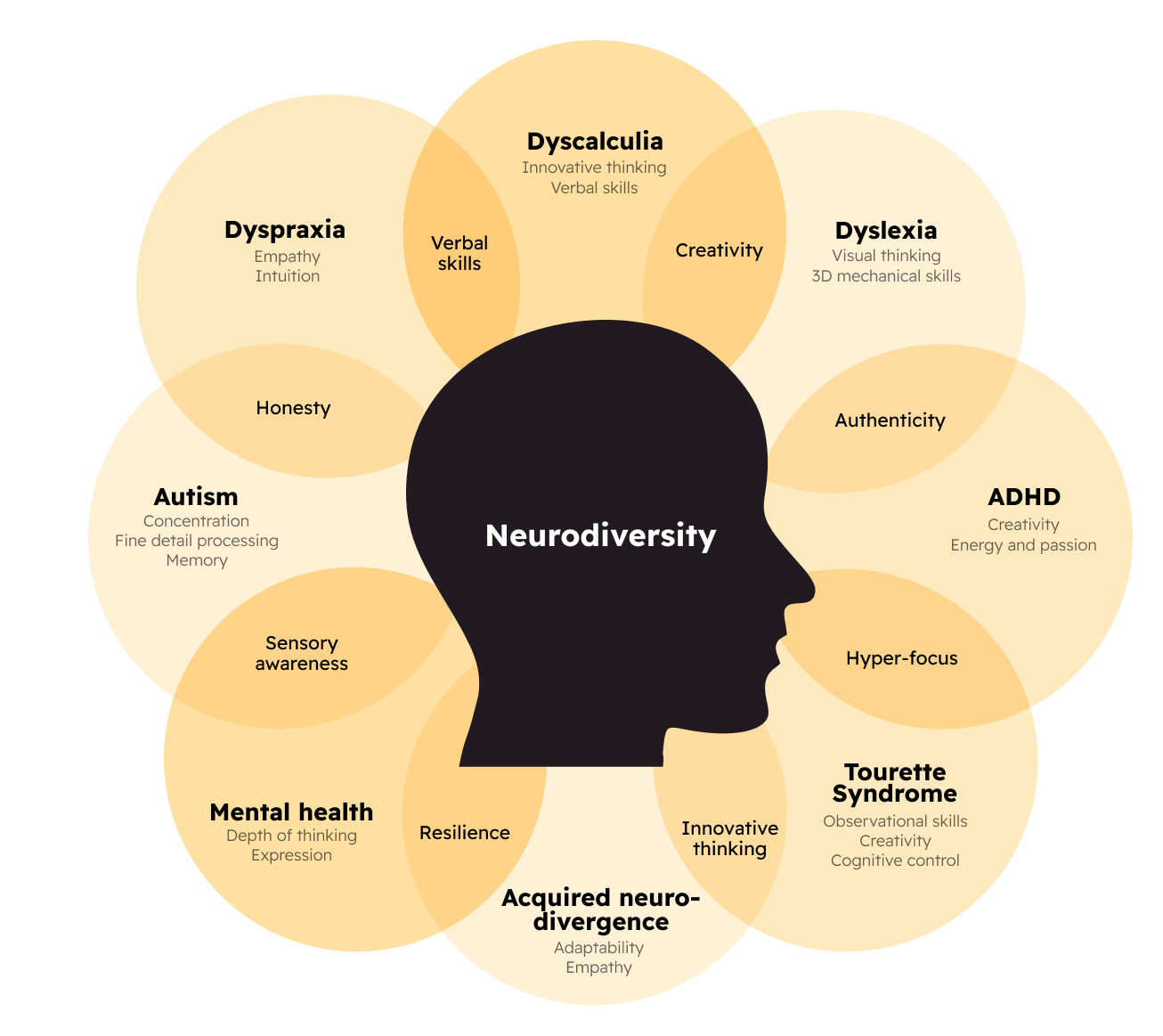Neurodiversity in the workplace
Neurodiversity in the workplace
5 minutes

Neurodiversity, a term coined by Australian sociologist Judy Singer, is about how we experience and interact with the world around us in naturally different ways. As our brains process and interpret information differently, each person then falls somewhere in between the neurodivergent and neurotypical spectrum, making each person’s thought process unique.
In essence, there is no “right” way of thinking.
Some people with broadly similar ways of thinking, processing, and communicating information may experience a shared identity that is quite different from the norm. This shared identity is known as neurodivergence.
Although approximately 1 in 5 people identify as neurodivergent, many remain undiagnosed or even misdiagnosed, hinting that the number of neurodivergent individuals is much higher. As the challenges organisations face become more complex, neurodiversity brings with it untapped potential.
Thus, understanding and leading neurodiverse teams becomes both a necessity for an inclusive future and a strategic advantage.
As workplace awareness of neurodiversity grows, so too are its added benefits. While the spectrum of neurodivergent conditions varies, organizations are seeing the advantages of diverse thinking within teams firsthand.

Neurodiversity brings not only fresh perspectives to challenges, but also provides your team enhanced skills and competencies to achieve beyond set goals.
Ready to explore neurodiversity? Check out how you can lead neurodiverse teams, appropriately respond when someone discloses being neurodivergent, or become familiar with the different types of neurodivergence.

Hellomonday